If video is a major part of your digital marketing strategy, then YouTube SEO is pivotal to growing your brand. YouTube is the world’s 2nd most popular search engine, and researchers estimate that it contains about 14 billion videos as of 2024.
That’s a lot of videos to compete with. How can you get your brand’s videos to rank in YouTube searches? You’ll need to master SEO for YouTube, so you can boost your visibility, engagement, and subscriber base.
We’ve accomplished all of those goals and more on OptinMonster’s YouTube channel. Using the tactics I’m sharing in this post, we’ve reached a subscriber base of nearly 10,000. That’s a big accomplishment for a niche channel, and it’s exponentially higher than the channels for our competitors.
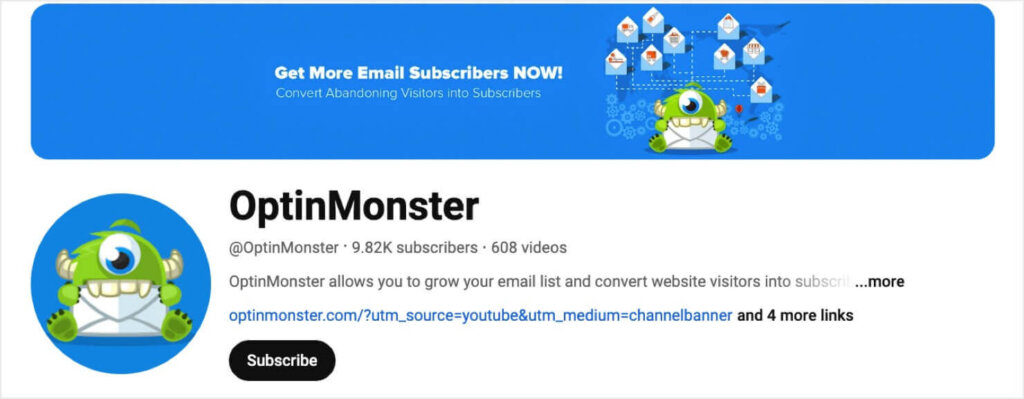
In this guide, I’ll cover everything you need to improve your YouTube video ranking. I’ll share YouTube SEO tips ranging from keyword research to advanced optimization techniques, and I’ll give actionable steps to rank higher and get more views on your videos.
Throughout the article, you’ll also see examples of how we implement these tactics at OptinMonster. That way, you can understand exactly how each tip works for a real brand.
Just Getting Started on YouTube?
Check out our popular guide: How to Get Your First 1,000 YouTube Subscribers (13 Tips!)
- What Is YouTube SEO?
- Keyword Research: The Foundation of SEO for YouTube
- How to Optimize YouTube Videos for SEO: 10 Steps & Best Practices
- How to Generate More Leads With Your YouTube Videos
What Is YouTube SEO?
YouTube SEO (Search Engine Optimization) is the process of optimizing your videos to rank higher in YouTube search results. It can also include improving ranking in Google search results. Like traditional SEO, YouTube SEO involves keyword research, but there are also several platform-specific optimization strategies.
YouTube’s algorithm considers several key factors when ranking videos. Some of the most important factors are:
- Relevance: How well your content matches the user’s search query
- Watch Time: How long viewers watch your videos
- Click-Through Rate (CTR): Percentage of people who click on your video after seeing it in search results
- Engagement: The number of likes, comments, and shares on the video and on the channel overall
Throughout this article, I’ll discuss tactics to improve these factors and increase your YouTube video rankings.
Keyword Research: The Foundation of SEO for YouTube
Before you can start optimizing your YouTube videos, you have to find the right keywords to target.
Keywords and search queries are the terms and phrases that users type into the YouTube search bar when looking for content.
By identifying and using the right keywords, you help YouTube understand the content of your videos. That makes it more likely that your video will appear in search results. Smart keyword research not only drives more views. It also attracts the right audience: people who have a genuine interest in your content, brand, and products.
Here are some of the best ways to conduct keyword research to help your YouTube video ranking.
1. Use YouTube’s Autosuggest Feature
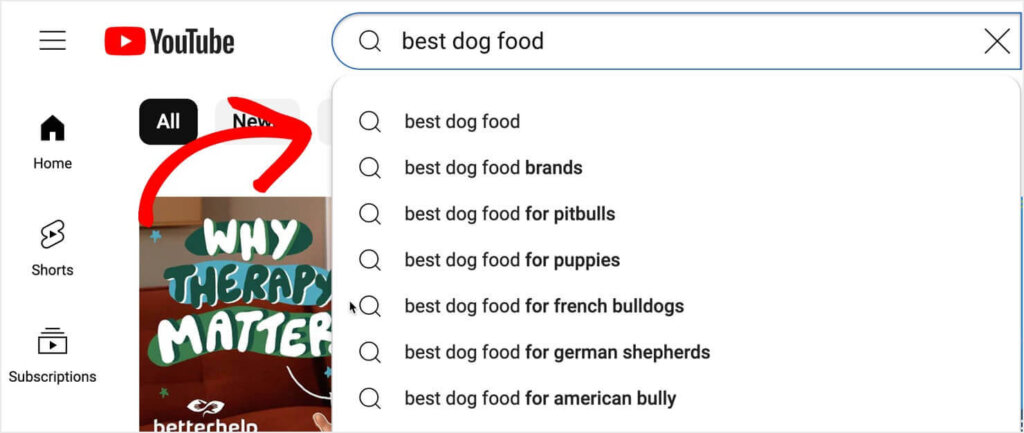
YouTube’s search bar is an excellent starting point for keyword research. As you type a word or phrase, YouTube automatically suggests popular searches. These autosuggestions reflect what users are actively searching for, making them valuable keywords to consider.
This process helps you both:
- Identify keywords for videos you’ve already made
- Find keywords to make new video content for
Example: If your video is about “yoga for beginners,” start typing “yoga for” into YouTube’s search bar. You might see autosuggestions like:
- “yoga for beginners”
- “yoga for flexibility”
- “yoga for stress relief”
These suggestions show what people are actively searching for. This information provides specific angles or subtopics to focus on in your video. For example, a specific phrase like “yoga for stress relief” could help you reach a new segment of your target audience.
Tip: Try typing a few variations of your main topic into the search bar, and take note of the autosuggested phrases. These can often reveal niche keywords you might not have considered.
2. Use Google Trends for YouTube Search
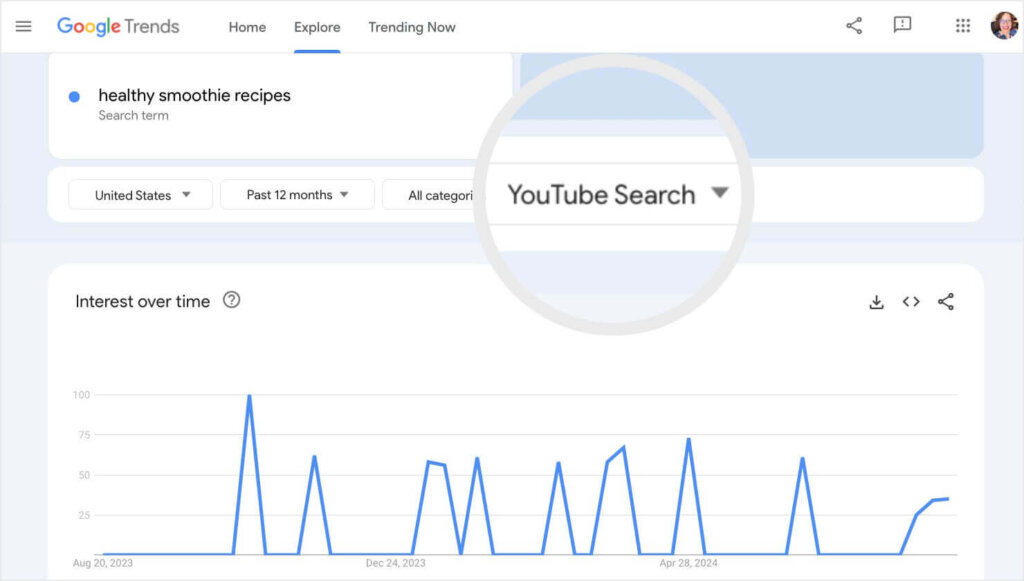
Google Trends is a free SEO tool that helps you discover trending keywords and topics. It offers a dedicated section for YouTube search data, allowing you to explore the popularity of specific keywords over time. You can also find trending topics within your brand niche, along with seasonal search trends.
Google Trends also offers a comparison feature. You can enter 2 search terms and see how their popularity compares over time. This free YouTube tool can help you determine the best main keyword for your video.
Example: Let’s say you want to make videos for healthy smoothie recipes. You can enter that main keyword into Google Trends and select YouTube Search. You’ll see a line graph of the term’s interest over time. If you scroll down, you’ll find a list of related keywords. You can see both:
- Top Related Queries: Similar keywords with the highest level of interest. For “healthy smoothie recipes,” I got results like “weight loss smoothie recipes,” “healthy breakfast recipes,” and “healthy breakfast smoothie recipes.”
- Rising Related Queries: These are search terms that are rapidly growing in popularity. They help you take advantage of keywords that are on an upswing. For “healthy smoothie recipes,” the rising related queries were “healthy snacks recipes” and “healthy green smoothie recipes.”
Tip: Use Google Trends to compare the search volume of different keywords. Opt for keywords that show consistent or rising interest over time, rather than those that spike and drop quickly.
3. Use Advanced YouTube SEO Tools
The YouTube search bar and Google Trends give you a great starting point for YouTube SEO research. But if you want to dig deeper, you’ll need a more advanced tool. Here are my top suggestions.
Semrush & Rank Tracker for YouTube
Semrush is the most thorough and effective tool for SEO keyword research. In fact, we list it as #1 in our list of best keyword research tools. Semrush focuses on traditional web search SEO, so it can help you get your YouTube videos ranking higher in Google searches.
Semrush also offers the Rank Tracker for YouTube app, which includes these features:
- Keyword tracking for up to 200 YouTube keywords
- Competitor video analysis
- YouTube rank change monitoring
Both Semrush and Rank Tracker for YouTube offer free trials.
TubeBuddy:
TubeBuddy is a browser extension and app for YouTube. It helps you optimize your YouTube videos to improve search rankings and engagement.
Here are some of TubeBuddy’s top features for SEO:
- Keyword Explorer: See detailed insights on keyword search volume, competition, and overall score, specifically for YouTube.
- Tag Management: Quickly discover and copy your competitors’ best-performing video tags.
- SEO Studio: This suite of SEO tools walks you through the process of optimizing all aspects of your YouTube video.
You can try out basic features, including the Keyword Explorer, with TubeBuddy’s free version. For full access, you’ll need to sign up for one of TubeBuddy’s paid plans.
Tip: Use these tools to identify long-tail keywords, which are more specific and less competitive. A long-tail keyword can be something like “what are the best ingredients for a protein smoothie.” This phrase probably has a lower search volume. However, if you’re selling protein powder, you want to target videos to people using that search term.
How to Optimize YouTube Videos for SEO: 10 Steps & Best Practices
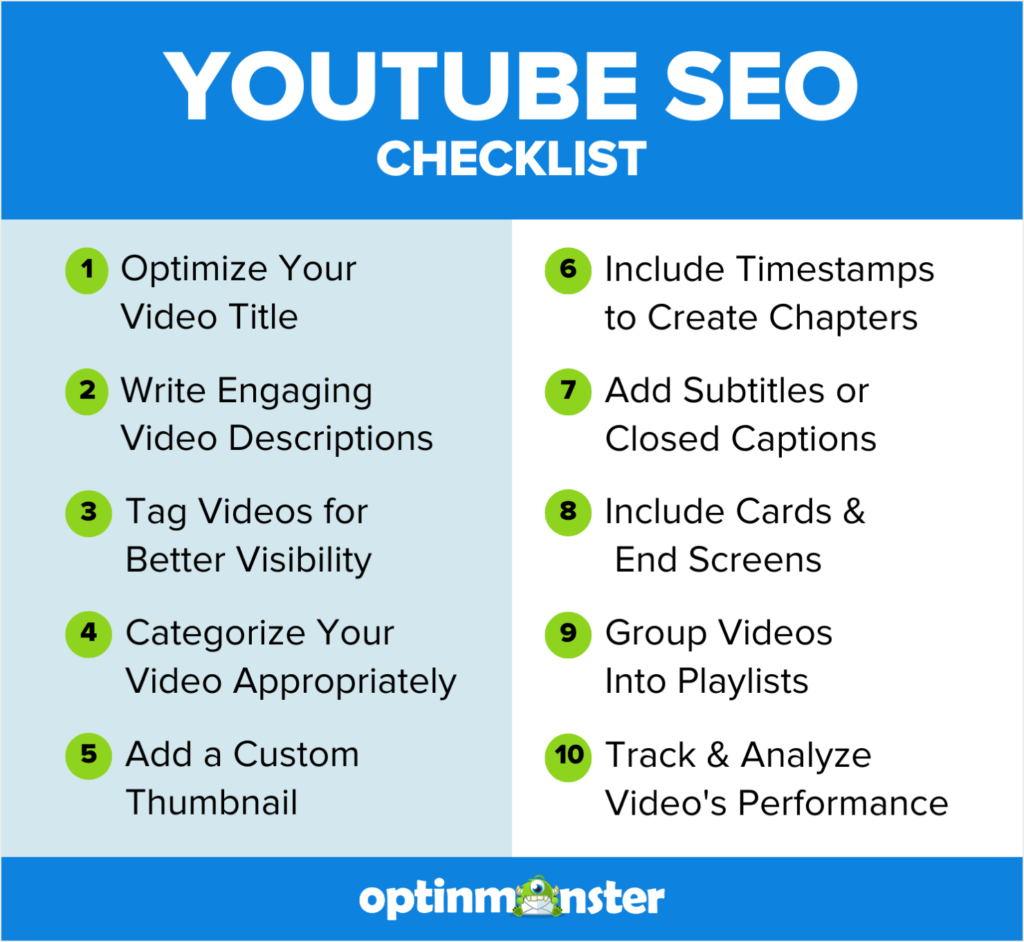
- Optimize Your Video Title
- Write Engaging Video Descriptions
- Tag Videos for Better Visibility
- Categorize Your Video Appropriately
- Add a Custom Thumbnail
- Include Timestamps to Create Chapters
- Add Subtitles or Closed Captions
- Include Cards and End Screens
- Group Videos Into Playlists
- Track & Analyze Your Video’s Performance
1. Optimize Your Video Title
Your video title should include your video’s main keyword. That lets the YouTube algorithm understand your content’s topic. Additionally, your title needs to entice users to choose your video over others in the search results.
When users are searching YouTube, your video title is one of the first things they see. That makes titles extremely important for click-through rates (CTR). Giving your video a catchy title is essential for getting more people to click on it, just like having a good email subject line increases open rates.
Here’s an example of a title we’ve used for a video on OptinMonster’s YouTube channel:
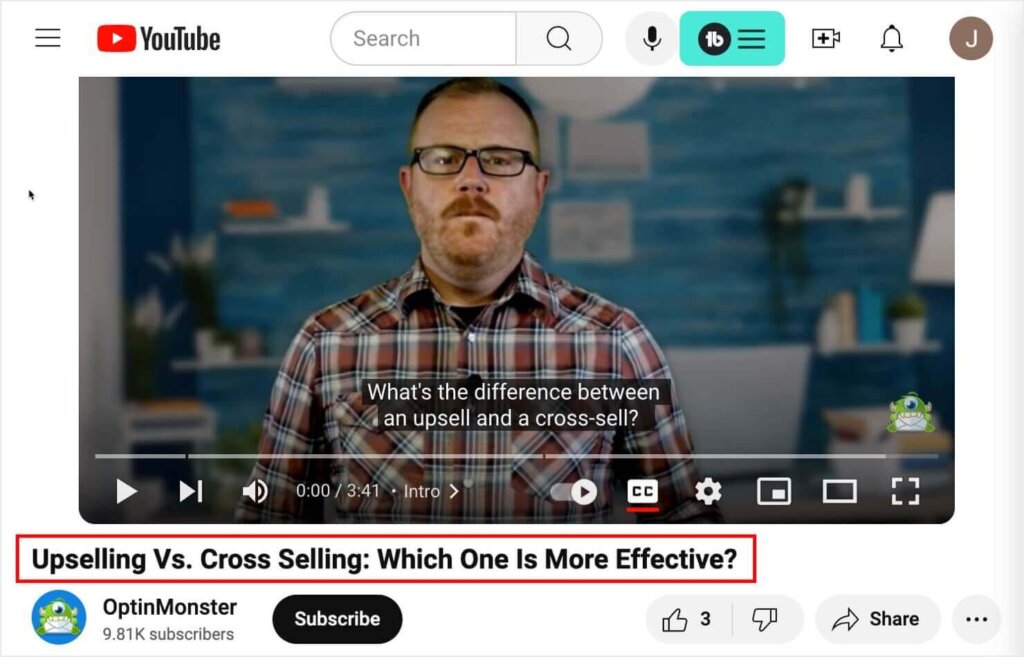
The title starts with our keyword phrase: “Upselling Vs. Cross Selling.” It continues with a question that shows exactly what information searchers will learn if they watch the video.
YouTube Title Best Practices:
- Use keywords early: Use your main keyword early in the title. For example, if your keyword is “YouTube SEO,” a good title might be “YouTube SEO: 10 Tips to Rank Your Videos Higher.”
- Incorporate keywords naturally: Your keyword phrase should make grammatical sense in your title. Don’t force it in a way that sounds awkward.
- Keep Titles Concise: Aim for titles around 60 characters to avoid truncation in search results.
- Consider Using Numbers, Parentheses, or Brackets: Variations from regular text can draw a searcher’s eye. For instance, you can say “Top 5 Tips” instead of simply “Tips.” Or you can add “(2025 Update)” to a new video guide.
A well-written, keyword-focused title won’t magically rank your video content at #1, but it’s an important first step.
2. Write Engaging Video Descriptions
Video descriptions help the YouTube algorithm understand the content of your video and provide context to viewers. You can also include important links in your descriptions.
Here is the description we use for our “Upselling vs. Cross Selling” video:
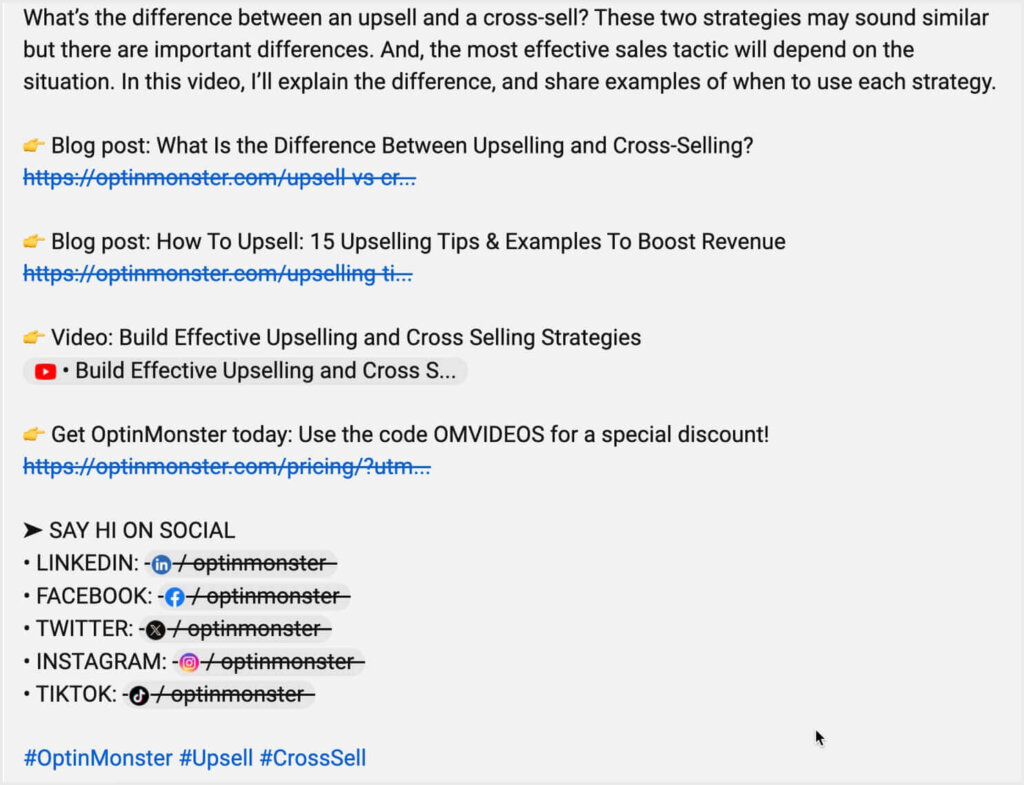
The description starts with a long-tail search term: “What’s the difference between an upsell and a cross-sell?” After the brief summary of the video’s content, the rest of the description consists of links to related content and OptinMonster’s social channels.
YouTube Description Best Practices:
- Include Keywords: Include your main keyword, or an important variation, within the first few lines of the description. Avoid keyword stuffing.
- Include CTAs and Links: Guide viewers with clear calls-to-action (CTAs), such as “Subscribe for more tips!” Include links to relevant content. YouTube descriptions are also the perfect place to add affiliate links.
- Focus on the First Few Lines: The first 100-150 characters should be catchy and informative. This portion is what appears in search results and above the fold in the description box.
Remember, YouTube’s search algorithm prioritizes user engagement. So if viewers regularly click links in your descriptions, YouTube will see that you’re providing helpful content.
3. Tag Videos for Better Visibility
Tags are a type metadata. They help YouTube understand the context of your video and improve its discoverability. Essentially, you’re providing a list of topics that your video falls unders. While not as powerful as titles or descriptions, tags still play a role in ensuring your content appears in relevant searches.
For our “Upselling Vs. Cross Selling” video, here are some of the tags we used:
- upselling vs cross selling (always include your main keyword as a tag)
- upselling and cross selling
- upselling tips
- how to upsell
- email marketing
- email marketing strategy
As you can see, we included several keyword variations that relate to the content of the video.
YouTube Tagging Best Practices:
- Start with your main keyword: Make your primary keyword the first tag.
- Include Related Terms: Use tags that are semantically related to your main keyword.
- Add spelling variations: If your topic or product is regularly misspelled, include common misspellings as tags.
- Use a YouTube Tag Generator: If you use TubeBuddy, you’ll get tag suggestions as you fill out your YouTube video’s details. You can also try TubeRanker’s YouTube Tag Generator Tool, which is free for limited use.
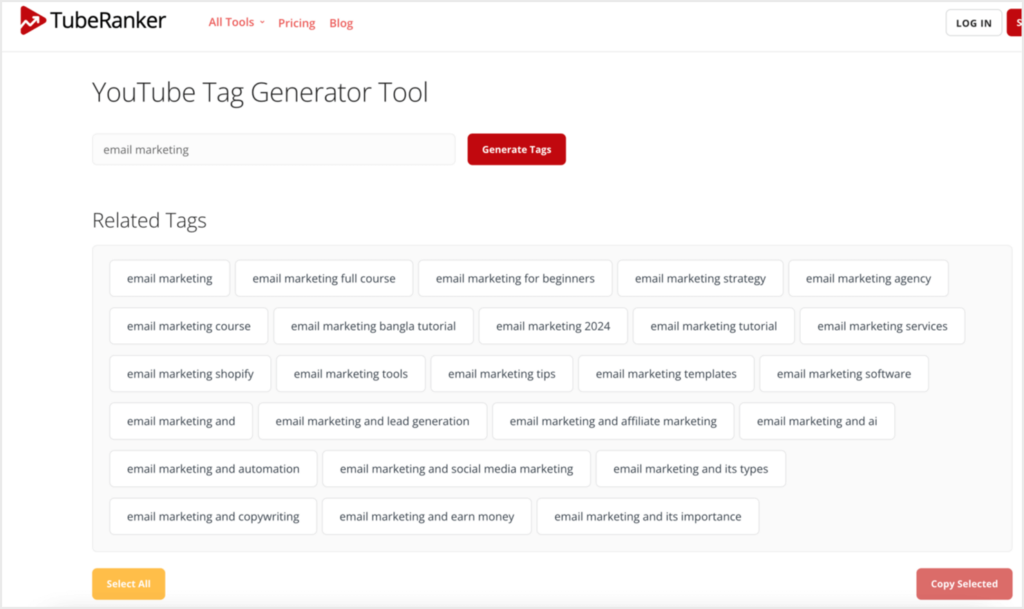
4. Categorize Your Video Appropriately
During the publishing process, YouTube will ask you to select a category for your video. While that sounds simple, it can be tricky to choose the best one. YouTube only offers 15 categories, and not every video will fall neatly into just one of them.
For example, it can be difficult to decide between 2 similar categories, such as “Comedy” or “Entertainment.” Or, you might have a video that demonstrates how to use a piece of software. Should you select “Science & Technology” or “Howto & Style”?
These best practices can help guide your decision.
YouTube Category Best Practices:
- Consider your audience: Think about who your target audience is and which category they’re likely to browse or search within. For instance, you might have an educational video about eco-friendly beauty products, and you’ll feature affiliate links in your description. While the video could fall under “Education,” your target audience is more likely to search for “Howto & Style” videeos.
- Stay consistent across your channel: If you regularly post content on a similar topic, keep your videos in the same category. Consistency helps build a clear brand identity and makes it easier for viewers to find related content on your channel.
- Reassess over time: As your channel grows and evolves, it may be worth reassessing your category choices. Your audience may shift over time, or your content focus may change. Don’t hesitate to update the category of older videos when needed.
5. Add a Custom Thumbnail
It’s easy to just let YouTube select a screenshot from your video to use as a thumbnail. However, these images are rarely eye-catching or effective. Your thumbnail is your visual hook to get searchers to click on your video, and a well-designed custom thumbnail can significantly boost your CTR.
For OptinMonster’s YouTube videos, we always create thumbnails that are fun, attractive, and intriguing:
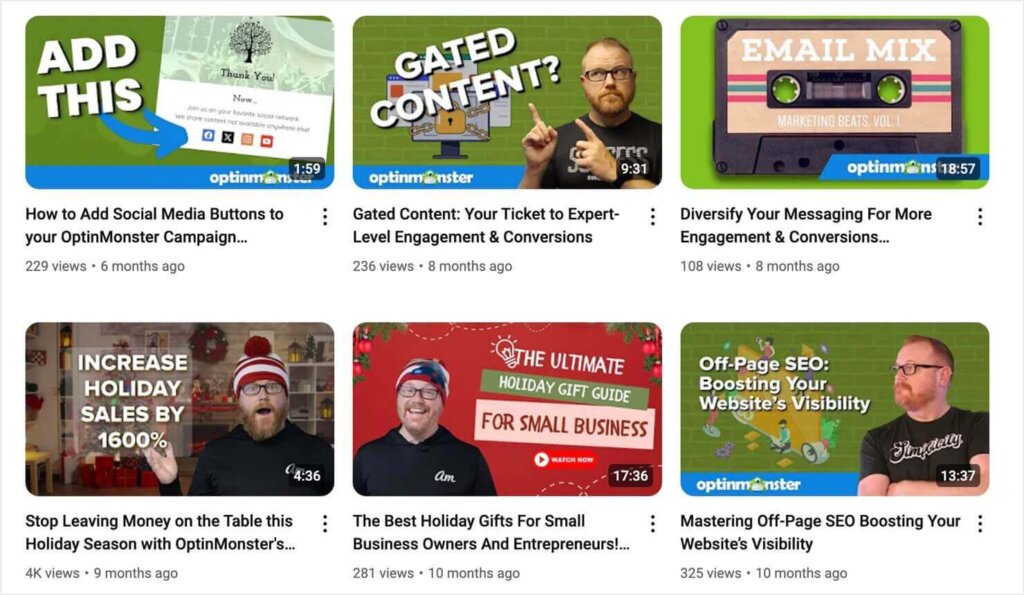
YouTube Thumbnail Best Practices:
- Stay on-brand: Use consistent colors, fonts, and design elements to make your thumbnails easily recognizable.
- Use faces and text: Thumbnails with faces tend to perform better because they create an emotional connection. Adding text can also clarify the video’s content at a glance.
- Choose high-contrast colors: Use bright colors and high-contrast images to make your thumbnail stand out. You want your thumbnail to be easy to see, even on small screens.
- A/B Test your thumbnails: YouTube has recently rolled out A/B testing for thumbnails. This feature lets you try out up to 3 thumbnails to see which performs the best.
6. Include Timestamps to Create Chapters
Timestamps are specific time markers added to a YouTube video’s description. They allow viewers to jump directly to a particular moment or section of the video. They’re perfect for longer videos or tutorials, where viewers might be interested in specific segments.
For example, we uploaded our webinar about A/B testing to YouTube and added timestamps in the description:
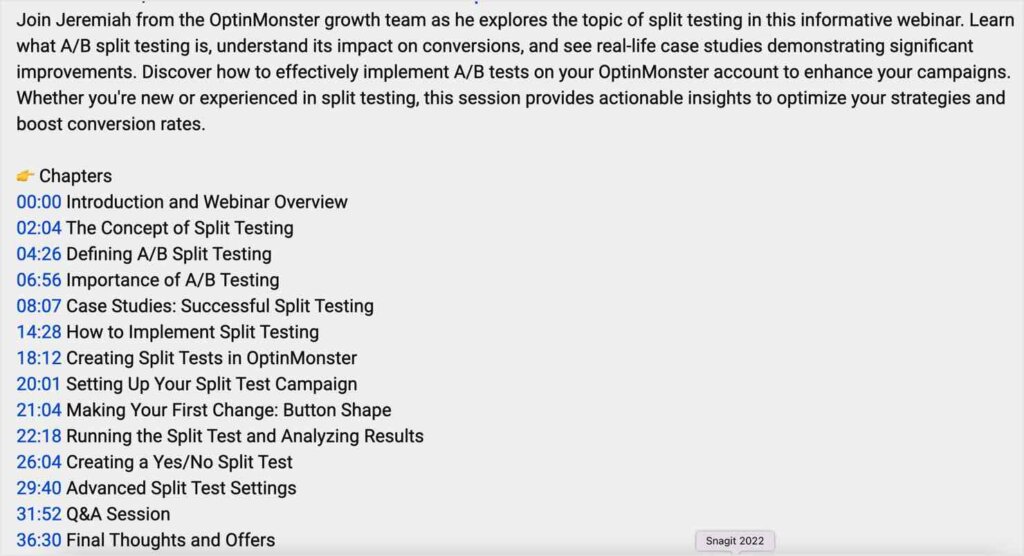
When timestamps are added to a video, YouTube automatically generates chapters, which are clickable segments on the video progress bar. Here’s what that looks like on our webinar video:
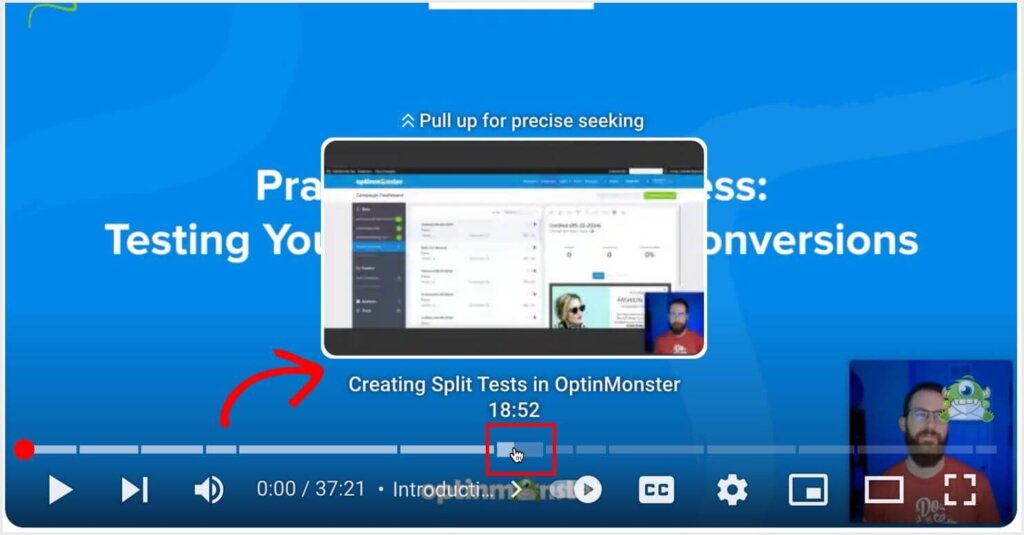
Timestamps help your YouTube SEO strategy in 3 ways:
- Increased watch time and engagement: Timestamps and chapters make it easier for viewers to find the information they want, which leads to better audience retention and more clicks. In turn, that helps your videos’ search rankings.
- More context for search algorithms: The titles of your timestamps give YouTube and Google more information about your video’s content. That can help your video rank for more search terms.
- “Key moments” in Google search: Google uses your chapters to create “key moments” that show up in Google video search results. Here’s an example of key moments that display on an OptinMonster video in Google search:

Best Practices for Adding Timestamps:
- Identify key sections: Before adding timestamps, identify the main sections or topics covered in your video. These sections should be natural breaks in the content that a viewer might want to jump to.
- Use descriptive labels: When labeling your timestamps, use clear and descriptive text. For example, instead of just writing “1:23 – Tip 1,” give more information by writing “1:23 – Tip 1: Optimize your video title.”
- Start with a 0:00 timestamp: Always start your list of timestamps with “0:00” and use a label like “Introduction.” This sets the stage for the viewer and lets them know they can jump to other sections if needed.
- Be consistent: If you’re creating multiple videos with timestamps, try to maintain a consistent format. Consistency helps regular viewers know what to expect and makes your videos more user-friendly.
7. Add Subtitles or Closed Captions
Accessibility is the #1 reason you should add subtitles or closed captions to all your videos. It’s also helpful for your YouTube SEO strategy and can help your videos get higher rankings.
Subtitles increase audience retention by catering to viewers who prefer watching without sound. More importantly, they help non-native speakers and users with hearing impairments. Your subtitles also give YouTube and Google more text to index and rank your video for, which directly impacts SEO.
YouTube Subtitle Best Practices:
- Create Accurate Subtitles: If you followed a script for your video, you can always upload your script using these transcript formatting guidelines. Otherwise, start with YouTube’s automatic captioning feature, or use a third-party service to generate subtitles. Make sure you always review and edit the transcript for accuracy.
- Decide between subtitles and closed captions: Subtitles only include the words that are spoken during your video. Closed captions also include descriptions of any noises, such as sound effects, music, or even sighs and laughs. Use closed captions if your video includes non-verbal sounds that are important to the video’s meaning.
8. Include Cards and End Screens
Cards and end screens are interactive, clickable elements that you can add to your YouTube videos. They help keep viewers engaged, promote additional content, and guide them towards specific actions. Cards and end screens can encourage viewers to subscribe to your channel, watch another video, or visit an external website.
These in-video links let you encourage viewers to take a desired action. For example, the end screens for many of our videos include a link to sign up for OptinMonster:
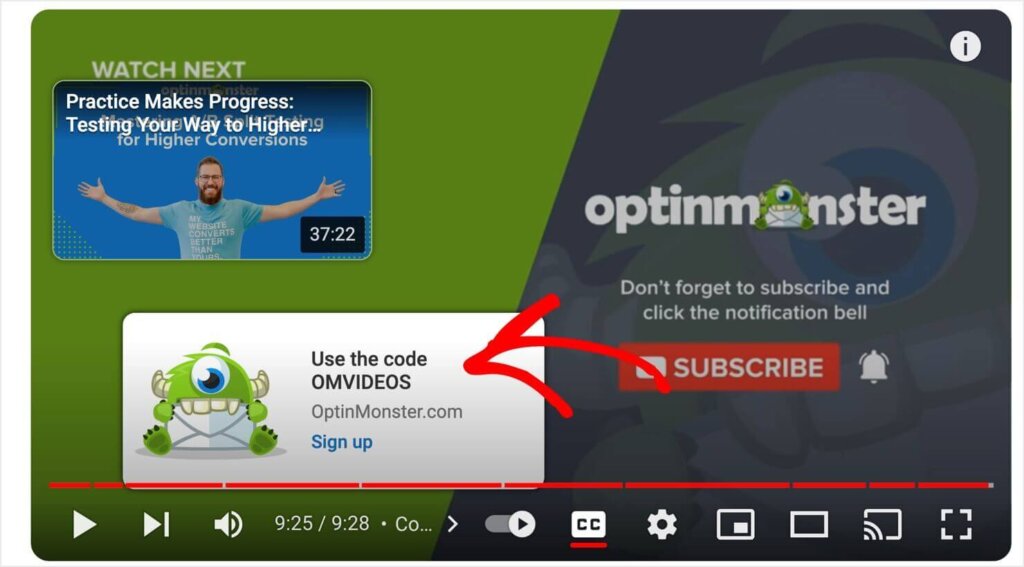
Clicks on your cards count as engagement, which helps your YouTube SEO.
Best Practices for Cards:
- Focus on timing: Place cards during moments when viewers are highly engaged or when they might be interested in exploring more content. For instance, if you mention a topic that you cover in another video, that’s the perfect moment to suggest it through a card.
- Keep it relevant: Make sure your card is highly relevant to the current video. You might link to a related video, a playlist, or a poll to engage your audience further.
- Limit the number of cards: Too many cards can be distracting. Stick to a few that provide real value and are well-timed.
Best Practices for End Screens:
- Keep it simple: Use a clear call-to-action (CTA) that encourages viewers to take the next step, such as subscribing or watching another video.
- Make it look great: Design end screens that are visually appealing and consistent with your brand. Use contrasting colors to make buttons and CTAs stand out.
9. Group Videos Into Playlists
YouTube playlists are collections of videos on a particular topic or related to a specific interest. They help you organize your content and keep viewers engaged for longer periods. Playlists create a seamless viewing experience that encourages binge-watching. That will increase overall watch time and improve the ranking of your YouTube videos.
OptinMonster’s YouTube channel is organized into a number of playlists, including this one called “How to Grow Your Email List”:
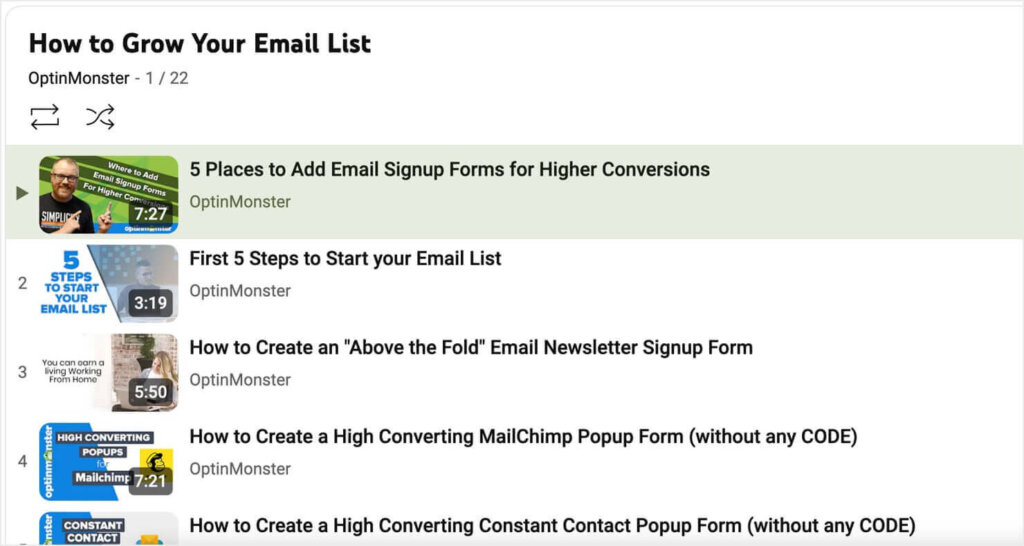
YouTube Playlist Best Practices:
- Group related content: Organize your videos into thematic playlists, so viewers can easily find the content they’re interested in. For example, a fitness channel might have separate playlists for beginner workouts, advanced routines, and nutritional advice.
- Optimize playlist titles and descriptions: Just like with individual videos, use keywords in your playlist titles and descriptions to help them show up in search results.
- Use a logical order: Arrange videos in a logical order within the playlist. For tutorial or educational content, this might be chronological or step-by-step. For entertainment, it might be by popularity or release date.
10. Track & Analyze Your Video’s Performance
SEO for a YouTube video isn’t a one-and-done process. You need to monitor each video’s performance so you can continually optimize your YouTube search rankings. Analyze metrics such as watch time, click-through rate (CTR), audience retention, likes, comments, and shares. This data lets you know which strategies are working and which ones you need to adjust.
Best Practices for Analyzing Performance:
- Use YouTube Analytics: YouTube’s built-in analytics let you easily track key metrics. Pay specific attention to any spikes and drop-offs in your videos. That helps you understand what keeps your target audience engaged and where they’re losing interest.
- Experiment and test: Use your data to test different strategies. For instance, if your CTR is low, experiment with different thumbnails and titles. If your watch time is low, consider adjusting your video’s length or structure.
- Monitor Engagement: Keep an eye on likes, comments, and shares. These interactions play a significant role in video performance. Respond to comments to encourage more interaction.
Generate More Leads From Your YouTube Videos
When you apply these YouTube SEO tips and best practices, you’ll start getting more views and engagement on your videos. But if your YouTube channel is part of a larger brand, then getting viewers is just the first step. You also want to encourage those viewers to take another action, such as purchasing a product or joining your email marketing list.
In other words, YouTube videos are a powerful way to generate more leads for your business. You just need the right tools and strategy to make that happen.
OptinMonster is the best lead-generation tool on the market. You can use our popups, floating bars, and other onsite campaigns to grow your email list and offer enticing coupons and lead magnets.
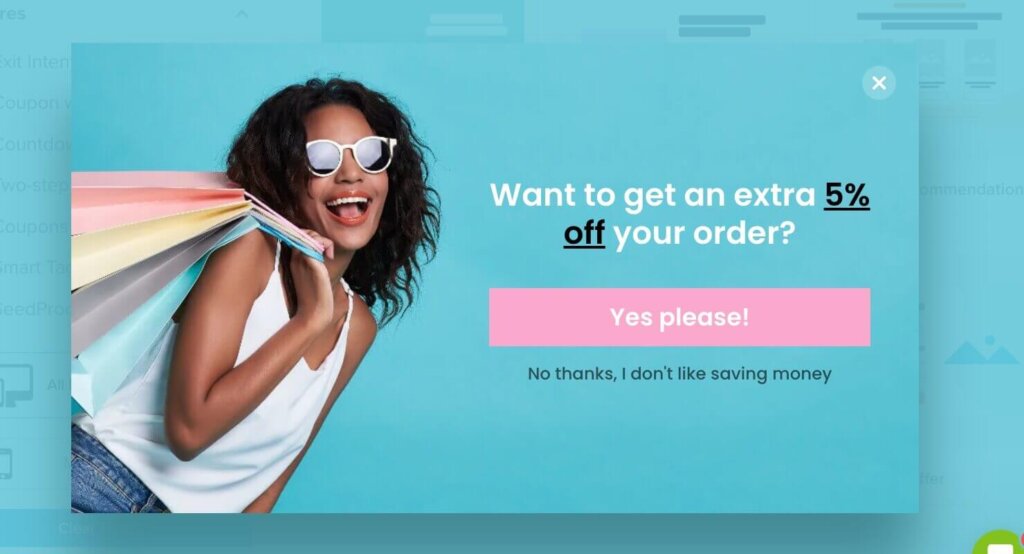
If you want to convert more of your YouTube viewers into leads, I suggest using these 2 strategies:
- Add OptinMonster campaigns to any web pages you link to in your videos or descriptions. You can use OptinMonster’s Referrer Detection to create special offers just for visitors coming from your YouTube channel!
- OptinMonster lets you create MonsterLinks™, which are links that directly open an OptinMonster campaign. In your video description, you can include text such as “Get more tips in our email newsletter,” “Download our free ebook,” or “Enjoy a 20% off coupon.” Use a MonsterLink™ to link that text to your OptinMonster campaign, which will ask for their email address to receive that perk.
That’s just a tiny glimpse at what you can accomplish with OptinMonster. Here’s a quick overview of our features:
Give it a try today with our 14-day money-back guarantee!
Related Resources:

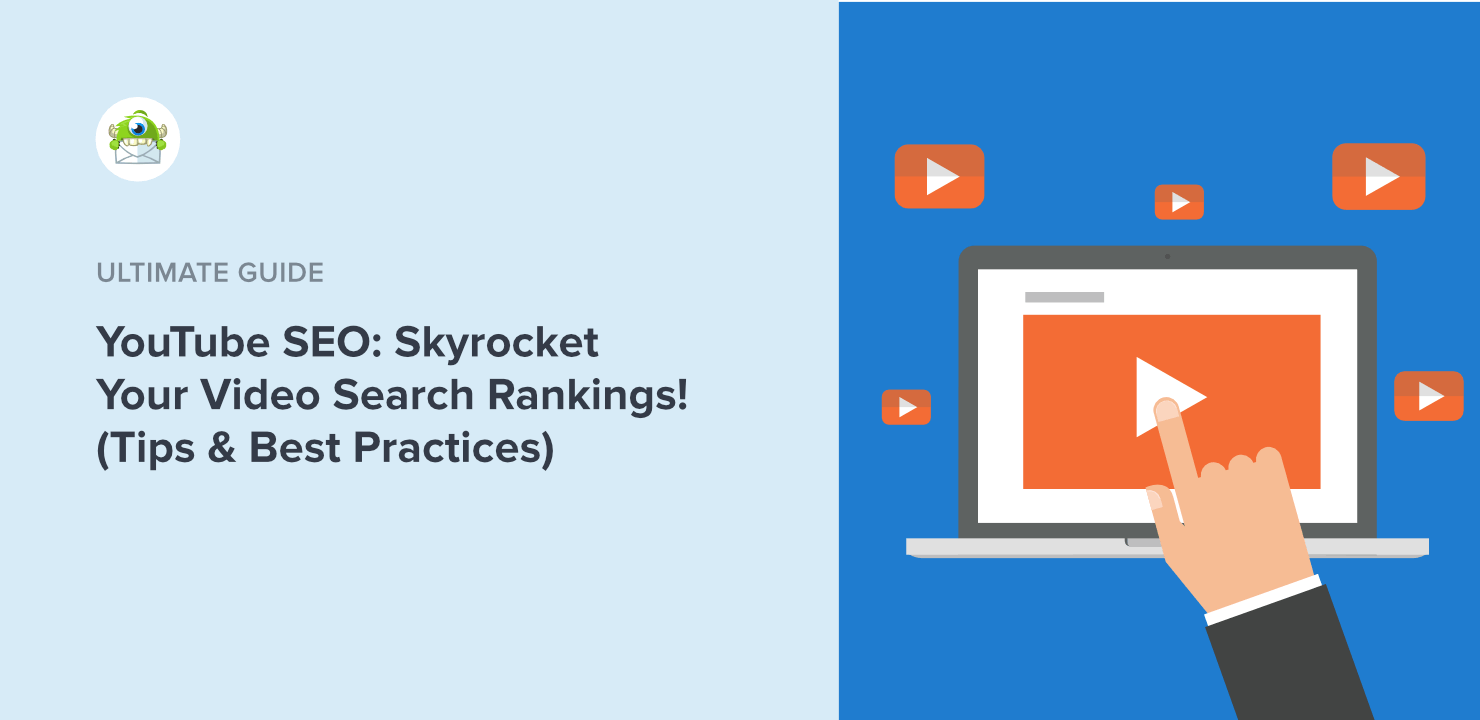
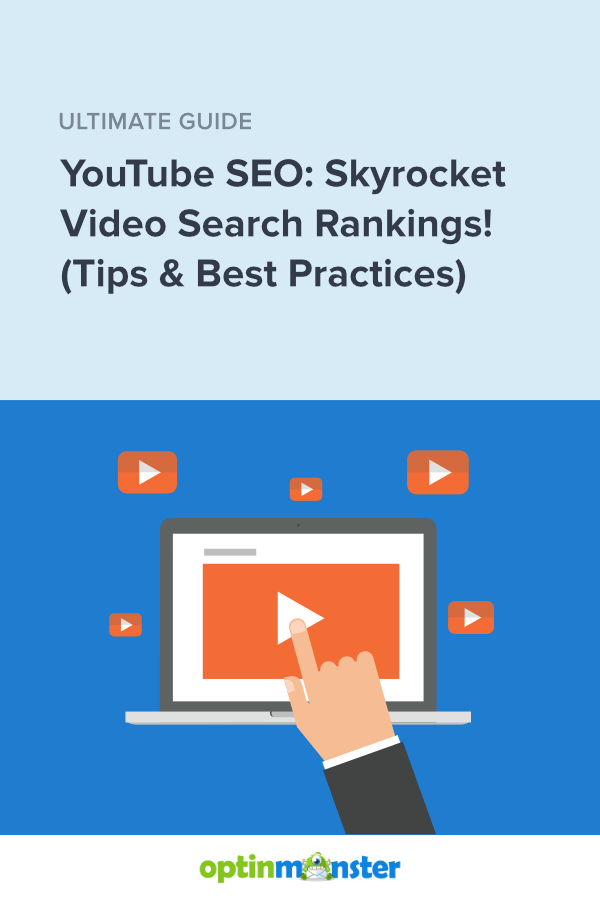








Add a Comment